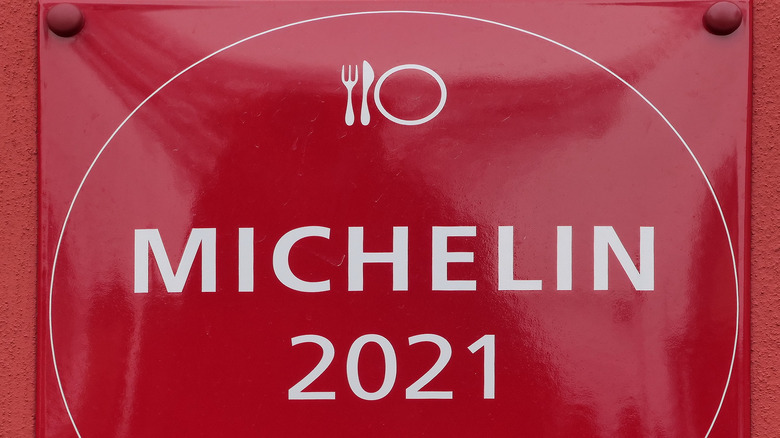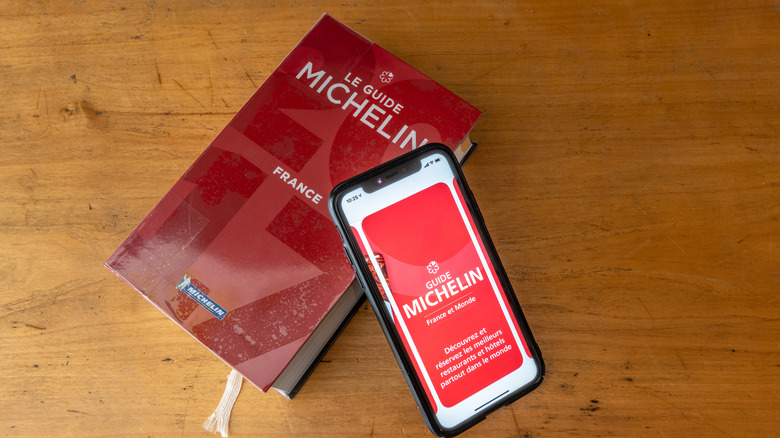Everything You Need To Know About The Michelin Plate Category
To have a mention in the prestigious Michelin guidebook will always be an honor for any restaurant. But does it mean anything if the mention doesn't come with a highly-coveted star or an icon of the Michelin Man himself, aka Bibendum, licking his chops, indicating a Bib Gourmand dining experience? An icon-less restaurant list was part of the Michelin guidebooks for several editions, and as Foodsided points out, it was cause for some consternation among foodies because it never seemed the listing had been properly explained.
But that changed in 2018 when the venerable guidebook decided to add a new icon featuring a fork, knife, and plate. Publishers called it L'Assiette Michelin, or Michelin Plate. As Michelin North America publicist Lauren Davis told The Washington Post in 2017, the designation came about because inspectors "want[ed] to highlight the restaurants that they review and find noteworthy food at but haven't earned that star or that Bib Gourmand yet." To further explain the Plate designation, Michelin said that "each restaurant that is included in the guide has been evaluated by a famed inspector, and subsequent inclusion in the guide, now marked by the new symbol, endorses restaurants that guarantee a very good standard of a food and wine experience."
The Michelin Plate: a participation trophy?
The Washington Post and Foodsided have both shrugged off the Michelin Plate designation as a "participation trophy" of sorts. However, Insider appears to feel differently about the new designation because it believes that being included in the guidebook is a worthy acknowledgment for a restaurant "where the inspectors have discovered quality food."
Like other Michelin-ranked restaurants, a Plate establishment would have been judged on the guidebook's famed "5 Restaurant Rating Criteria" that are set in stone. As one inspector revealed in an interview published on the Michelin site, to judge a restaurant, "We simply look at the dish's main components as well as the 5 criteria: Quality of products, mastery of flavor and cooking techniques, the chef's personality represented in the dining experience, harmony of the flavors, and, lastly, consistency between inspectors' visits." Inspectors are also known to visit a restaurant several times to make sure that the place is properly vetted. So participation trophy or not, a L'Assiette Michelin designation is still something that a chef can — and should — be proud of.

